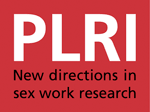RHRU
A news story on PlusNews that explores plans to offer sex workers loans in return for exiting sex work. It explores the debate about rights vs rehabilitation with reference to the OSI report ‘Rights not Rescue’, research by SWEAT and interventions run by the Reproductive Health & HIV Research Unit (RHRU) of the University of Witwatersrand, in Johannesburg .

